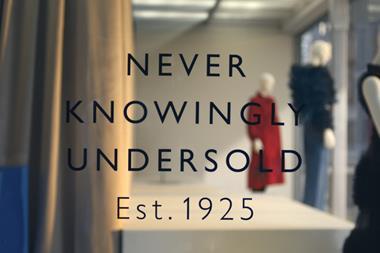However you define it, stores and online are what really matters.
However you define it, stores and online are what really matters.
You say multichannel, I say omnichannel…multichannel, omnichannel, channel agnostic, multi-touchpoint: let’s call the whole thing off.
They may not quite fit the rhythm of the old song, but this cocktail of new buzzwords is certainly providing the drumbeat that the retail world is marching to at the moment. I have been struck, though, by the fact that behind the buzzwords there is a notable lack of any clarity as to what a multichannel offer might actually look like.
A natural response to this is that we are peering into the future, and the detail will only emerge clearly as we go along. If we knew all the answers, we’d be doing it already, right?
Well no, actually. I’m going to attempt a bit of myth-busting here, and I’d say that we’ve known the answers all along.
For a start, there are only two channels, the shops and online. Customers may intermix their use of them, they may access them in various ways, but in the end, they either turn up and physically select the goods they want to buy, or they order them remotely. So we should be talking about dual-channel, not this plethora of other sexy but misleading labels.
Secondly, the challenge is not to develop numerous new ways of selling to customers, but to use, integrate and co-ordinate properly the ones we already have.
As I have said before in these pages, retailers have been slow to address the online opportunity, thereby conceding much advantage to online specialists. We now need to get online propositions up to speed and working properly alongside traditional operations. What is not in doubt is the urgent need to do so. John Lewis managing director Andy Street, speaking at the BRC Symposium earlier this year, set a new bar for online penetration when he revealed that John Lewis’ online sales account for 25% of the total. He also, rather ominously, predicted that like-for-like store sales growth would henceforth be exceedingly difficult to achieve given the increasing migration of sales online.
Redefining ourselves as integrated physical and online businesses is now unavoidable. The old way of having a separate online business, run to different standards and often competing (or constrained by fear of competing) with the stores, is defunct.
Many of the multichannel strategies being adopted by retailers are moves towards this integration. Examples include:
- redefining store managers as territory managers, with responsibility (and credit) for on- and off-line sales in their catchment area;
- building online offers that properly complement in-store ranges;
- investing in improving access, visibility and promotion of the online operation (as has been done for stores for years);
- deploying technology to promote the whole retail offer, not just part of it.
In truth, these ideas were valid five years ago, and they probably read more like common sense than dramatic innovation. I believe that’s exactly what they are.
The successful multichannel retailer of the future will not look totally different to today’s, rather it will be doing much better what we already do now.
- Simon Burke is chairman of HobbyCraft


























1 Reader's comment